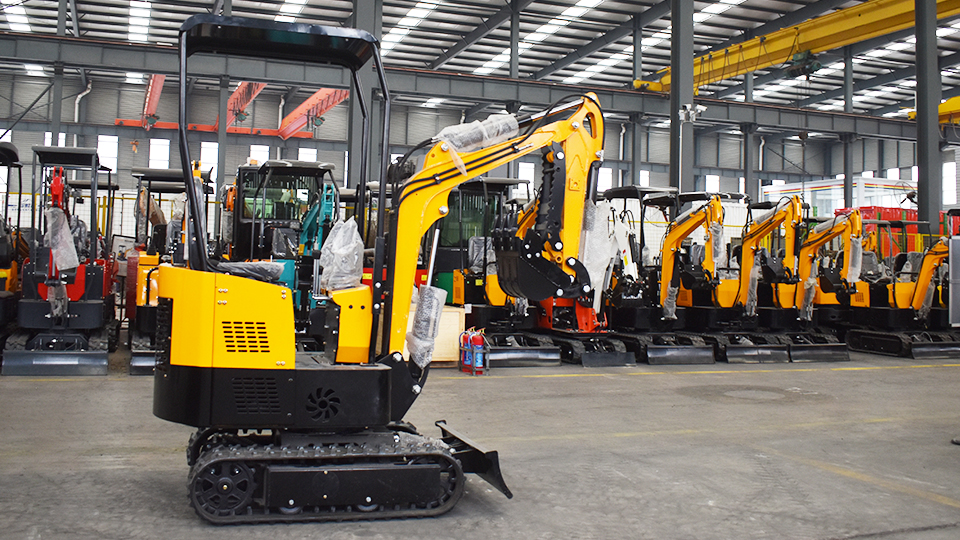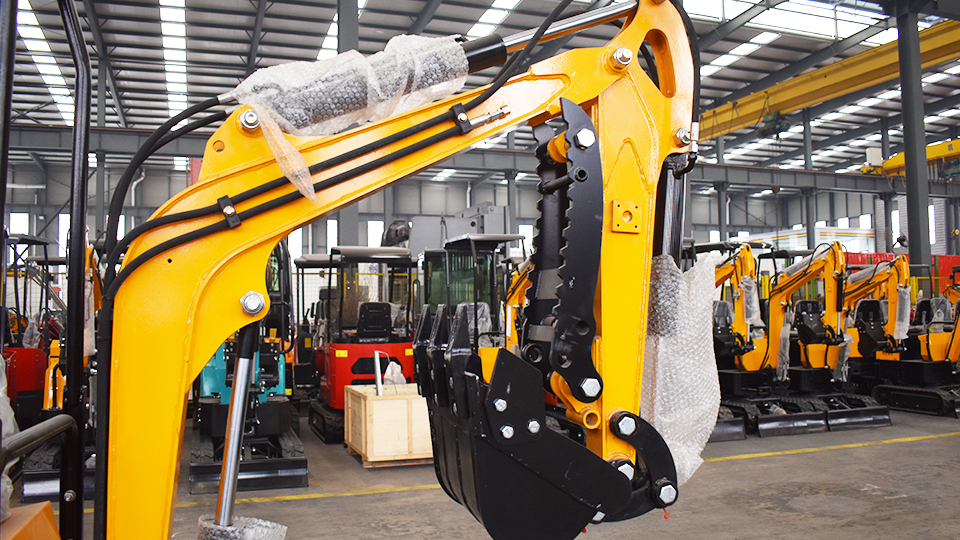Abstract
The acquisition of a used excavator from a commercial rental fleet represents a highly advantageous yet often overlooked strategy for capital equipment procurement. Rental companies—including global giants and regional dealerships—operate under strict, time-bound fleet rotation schedules to maintain a modern inventory for their clientele. This necessity creates a predictable, high-volume flow of used machines into the secondary market. Unlike equipment from general contractors, rental fleet excavators are typically subject to mandatory, rigorous Preventative Maintenance (PM) schedules, extensive condition monitoring via telematics, and documented service histories. This technical guide outlines the specific channels, timing strategies, and due diligence procedures necessary for locating and successfully acquiring these high-quality, off-lease machines in your local market.
1. The Strategic Advantage of Rental Fleet Excavators
For independent operators and mid-sized construction firms, purchasing an off-rental excavator offers a compelling value proposition over the traditional used market.

Feature Rental Fleet Machine General Used Market Machine
Maintenance History Fully documented. Service intervals mandatory for warranty and resale value. Often includes Fluid Analysis (SOS). Highly variable. Records may be lost or incomplete.
Age and Hours Typically young (2-4 years) with moderate, well-monitored hours (1,500 - 3,500 hours). Wide range of age and hours, often exceeding 5,000 hours.
Specifications Standardized, well-equipped, common models for mass appeal (e.g., auxiliary hydraulics, cab A/C). Unique, often customized or poorly spec’d.
Post-Sale Support Often includes an opportunity to purchase extended warranty (e.g., United Guard or Cat Certified Used). Standard As-Is, Where-Is terms.
The key is that rental companies treat their fleet as a revenue stream and a liquid asset. They must protect the residual value, which mandates excellent maintenance and a defined rotation cycle.
2. Identifying the Three Primary Off-Loading Channels
Used rental excavators enter the market via three main channels, each requiring a different search methodology.
2.1. Direct-to-Customer Sales Divisions (The Retail Channel)
The largest rental corporations and heavy equipment dealerships maintain dedicated sales divisions for their off-lease equipment. This is the most transparent and, often, the most reliable channel.
A. National Rental Giants (e.g., United Rentals, Sunbelt Rentals)
These companies have massive, standardized fleets and a high-volume turnover strategy.
Locating: These firms list used equipment directly on their corporate websites under sections like "Used Equipment Sales" or "Used Excavators for Sale." You can search and filter by machine type, hour range, and the specific branch location where the machine is situated.
Advantage: Scale and Documentation. They provide transparent pricing (often listed online), high-quality photos, and frequently include access to basic service history or a general condition report.
Actionable Tip: Set up email alerts on their websites for the specific makes/models you are interested in (e.g., Cat 305E, Kubota KX040).
B. Manufacturer Dealerships (e.g., Cat Dealers, John Deere Dealers)
Major OEM dealers (e.g., Finning, RDO Equipment, Gregory Poole) often have a dual function: new equipment sales and a large rental fleet.
Locating: Navigate the local dealership's website to their "Used Equipment" or "Rental Fleet Sales" page. Machines listed here are typically the manufacturer's preferred brand (e.g., a Cat dealer selling a used Cat 320).
Advantage: Certified Used Programs. These machines may qualify for the OEM's certified used program (e.g., Cat Certified Used), which includes a multi-point inspection, necessary repairs, and an option for a manufacturer-backed warranty.

2.2. Heavy Equipment Auction Houses (The Wholesale Channel)
A significant portion of rental fleet liquidations is funneled through specialized heavy equipment auctioneers to rapidly clear inventory and realize wholesale prices.
A. Global Auctioneers (e.g., Ritchie Bros., IronPlanet, AuctionTime)
These platforms conduct auctions with a high volume of consignments from major rental companies.
Locating: Search the auction catalogs using keywords like "Rental Fleet," "Ex-Rental," or by identifying the consignment company (e.g., look for equipment registered to United Rentals or Sunbelt). The online listings will explicitly state if the machine is from a rental fleet.
Advantage: Volume and Pricing. Auctions often provide a direct shot at competitive market pricing. You can inspect multiple similar models in one place.
Actionable Tip: Focus on listings that include detailed Inspection Reports and a high volume of photographs, as inspections are your only opportunity for due diligence. IronPlanet is notable for its detailed, guaranteed inspection reports.
B. Local and Regional Auctions
Smaller, local auctioneers often liquidate smaller regional fleet inventory.
Locating: Monitor local and regional auction sites. Contact local rental branch managers and ask which auction house they typically use for end-of-cycle machines.
2.3. Fleet Brokerage and Aggregator Platforms (The Search Engine Channel)
Online marketplaces serve as search engines, pulling listings from all other channels (dealerships, private sellers, and sometimes auctions) into a single database.
Locating: Websites like Equipment Trader, Machinery Trader, and Rock & Dirt allow filtering by equipment type and location. While they mix all sellers, many rental company and dealer listings are indexed here.
Advantage: Comprehensive View. They provide a single interface to gauge market pricing and local availability across various sellers.
3. The Technical Timing of Fleet Rotation
Understanding the financial and operational drivers of the rental cycle allows buyers to predict when excavators will become available, improving negotiating leverage.
3.1. The Critical Hour Benchmark
Rental companies operate with a financial model based on realizing a predictable residual value. This value is tied to both the machine's age and its operating hours.
Mini and Compact Excavators (Under 10,000 lbs): Typically off-loaded between 1,500 and 2,500 hours or within 3-4 years of service. Their high utilization rate pushes them to the hour limit faster.
Mid-Size Excavators (10,000 - 30,000 lbs): Usually rotated between 2,500 and 3,500 hours or within 4-5 years. This class is the core of most rental fleets.
Large Excavators (Over 30,000 lbs): These may be held longer, often until 4,000 - 5,000 hours, due to their higher initial cost and lower relative utilization rate in the rental market.
3.2. Seasonal and Fiscal Off-Loading
The highest volume of sales often occurs during the rental company's slower season and at their fiscal year-end.
Quarterly/Annual Purges: Rental companies often conduct major fleet rotations in the late Fall (October/November) and Winter (January/February) to clear aging inventory and prepare for the next year's new equipment delivery and the Spring construction boom.
End of Fiscal Year: Many major firms align liquidations with their fiscal year-end to meet capital asset depreciation targets, often resulting in large auction consignments.
4. Due Diligence: The Importance of Documentation
A common misconception is that rental machines are "beaten up." While they are heavily utilized, the required maintenance procedures often mean the core components are in superior, documented condition.
4.1. The Service Record: Your Primary Asset
Never purchase an off-rental machine without a complete, verifiable service log. Rental company records should include:
Preventative Maintenance (PM) Schedule: Log entries for all scheduled service performed (e.g., 250-hour, 500-hour). Look for consistency and adherence.
Fluid Analysis Reports (SOS/Sampling): Reports on engine oil, hydraulic fluid, and coolant. This is the most critical data point, revealing the wear rate of internal components (engine, pump, transmission). Consistent, satisfactory reports confirm a healthy internal system.
Repair History: Records of any unscheduled repairs, accident damage, or major component replacement.
4.2. The Physical Inspection: Focusing on High-Wear Areas
While a clean service record is vital, a physical inspection is mandatory. Off-rental machines often have high cosmetic wear but sound mechanicals. Focus your inspection on the following areas:
Undercarriage: Critical for tracked excavators. Inspect the condition of the track links, rollers, idlers, and sprockets. Rental fleets often defer undercarriage replacement until sale, making it a key negotiation point.
Measurement: Request Undercarriage Percentage Wear readings, typically determined by track link pitch and roller diameter measurements.
Boom, Stick, and Attachments: Check for excessive wear, structural welds, or cracks, particularly near the bucket pins and cylinder mounts. Look for excessive 'slop' (play) in the pin and bushing connections—a telltale sign of heavy use and deferred repair.
Hydraulic System: Inspect all hydraulic lines for rubbing, leaks, or fraying. Listen for unusual noises during full-cycle operation (swing, curl, extension). The cleanliness of the hydraulic oil, confirmed by the SOS report, is essential.
5. Summary of Best Practices for Local Acquisition
A successful acquisition of a used rental excavator depends on combining channel knowledge with rigorous technical due diligence.
Identify Local Sources: Map out all local and regional branches of major rental companies (United Rentals, Sunbelt, Herc Rentals) and all local OEM dealerships (Cat, Deere, Komatsu).
Monitor Online Inventories: Dedicate time to regularly check the Used Equipment Sales pages for these local sources.
Leverage Timing: Focus your heaviest search and negotiation efforts during the off-loading seasons (Late Fall/Early Winter).
Demand Documentation: Do not negotiate on price until you have reviewed the full service history, including Fluid Analysis Reports.
Conduct an Expert Inspection: Hire an independent third-party mechanic or heavy equipment appraiser to perform a detailed physical inspection and verify the undercarriage wear.
By following this multi-pronged technical strategy, buyers can effectively tap into the steady stream of well-maintained, late-model excavators from rental fleets, securing a high-value asset at a significant discount to new equipment pricing.
Post time:Sep-25-2020
